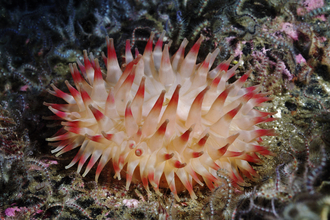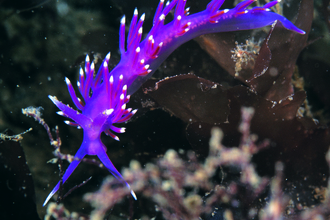
Jewel anemone ©Paul Naylor www.marinephoto.co.uk
Jewel anemone
It's easy to see where the jewel anemone got its name - the tiny colourful blobs that tip its tentacles look like jewels! Forming dense, colourful carpets on rocky overhangs, jewel anemones are one of the UK's most beautiful underwater sights.
Scientific name
Corynactis viridisWhen to see
January to DecemberSpecies information
Category
Statistics
Height: up to 1.5cm tall, 2.5cm acrossConservation status
Common




